Living
Marriage: It’s more (and less) than you think
A wedding can have unexpected impact on wills


In most states, if you die without a Will and you are married and that marriage is recognized, your spouse will inherit a share of your estate.
By LAWRENCE S. JACOBS
In the eight months since the fall of the Defense of Marriage Act, I have witnessed a huge rush to marriage among friends, clients and our community at large. Many of those people dramatically underestimate the changes that marriage might bring to their lives, while at the same time being lulled into a false sense of security that marriage will solve every potential legal issue that comes along. Of course, it won’t.
Hundreds and hundreds of benefits accrue to married couples. Yet, many of those benefits are misunderstood and do not come automatically. For example, the right to own real estate as a married couple does not and cannot happen unless the deed to that property includes that right. Many of my clients own their homes as joint with right of survivorship. But married couples can hold real estate as tenants by the entirety, which is much better. Far too many of my clients live in a home that is only owned by one of them. If something happens to that homeowner, the other one may be literally out on the street. Not surprisingly, we re-deed many of our clients’ homes, which is neither difficult nor expensive. Where the transfer of title may be impractical or undesirable, we create Revocable Trusts for the purpose of owning real estate.
Wills are another area where marriage has unexpected impacts. In most states, if you die without a Will and you are married and that marriage is recognized, your spouse will inherit a share of your estate. The amount of that share varies and can be as low as one-third. A properly drafted and signed Will can override those rules. For couples with children, the default rules can be even more problematic because minors cannot inherit money directly, either under a Will or because they were named as the beneficiary of a life insurance or retirement account. Worse yet, no matter how much money you leave, they will likely get it all in a single payment on their 18th birthday. Wills can and frequently do establish distribution schemes that make much more sense.
Marriage only solves problems for couples when both of them are healthy and alive. If either of those should become untrue, then the marriage may count for little or nothing. If your spouse becomes incapacitated, you may have medical decision-making rights, but not the right to manage their separate assets. That is usually accomplished by general durable power of attorney. Otherwise a guardianship petition will be required, which are typically expensive and time-consuming. If your spouse dies before you, and you die later without a will, your assets will all be distributed to certain family members with parents typically first in line, regardless of whether that makes sense.
Marriage equality also brings with it the trials and tribulations that our straight counterparts have endured for generations. If you break up in the future, the only way to end that legal relationship is through a divorce. While you are still married, you cannot change your Will to completely disinherit your spouse. If you get divorced, the court will determine how to divide your assets. The court may also order you to pay alimony to your former spouse. However, all of these potentially adverse outcomes can be changed in a properly drafted prenuptial (and sometimes post-nuptial) agreement. A word of caution: do not call a lawyer the week before your marriage for a pre-nup. I typically advise my clients to allow six to eight weeks.
None of this is intended to discourage anyone from getting married. I am a firm believer in that institution and took the plunge myself in 2009. Rather, I view my job as educating people on the issues, so that they can then make good decisions.
Larry Jacobs has helped hundreds of same-sex couples in the Washington area protect their assets and loved ones through partnership planning. He is a partner at McMillan Metro, P.C. and has practiced law for 39 years. He is admitted to the bar in Maryland, Virginia and D.C. You can learn more about Larry and his practice at PartnerPlanning.com.
Autos
Revving up the holidays with auto-themed gifts
Lamps, mugs, headphones, and more for everyone on your list

Here’s how to shift your holidays into high gear.
Bentley Bottle Stopper
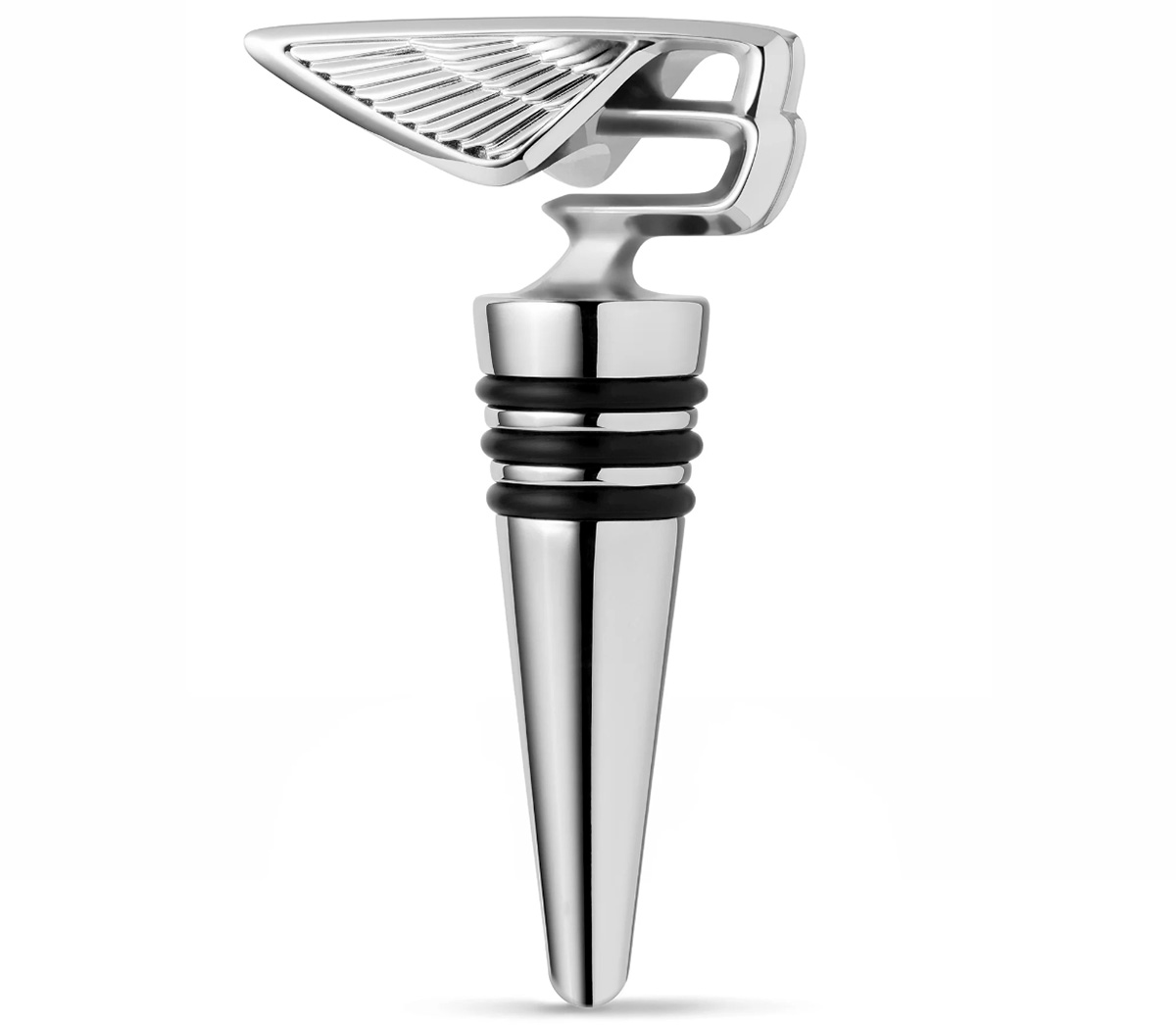
Pop your cork—in a good way—with a Bentley bottle stopper ($106), made of zinc alloy with chrome plating and rubber rings. The classy design is inspired by the automaker’s iconic “Flying B” mascot from 1930.
Subaru Motorsports Counter Stool
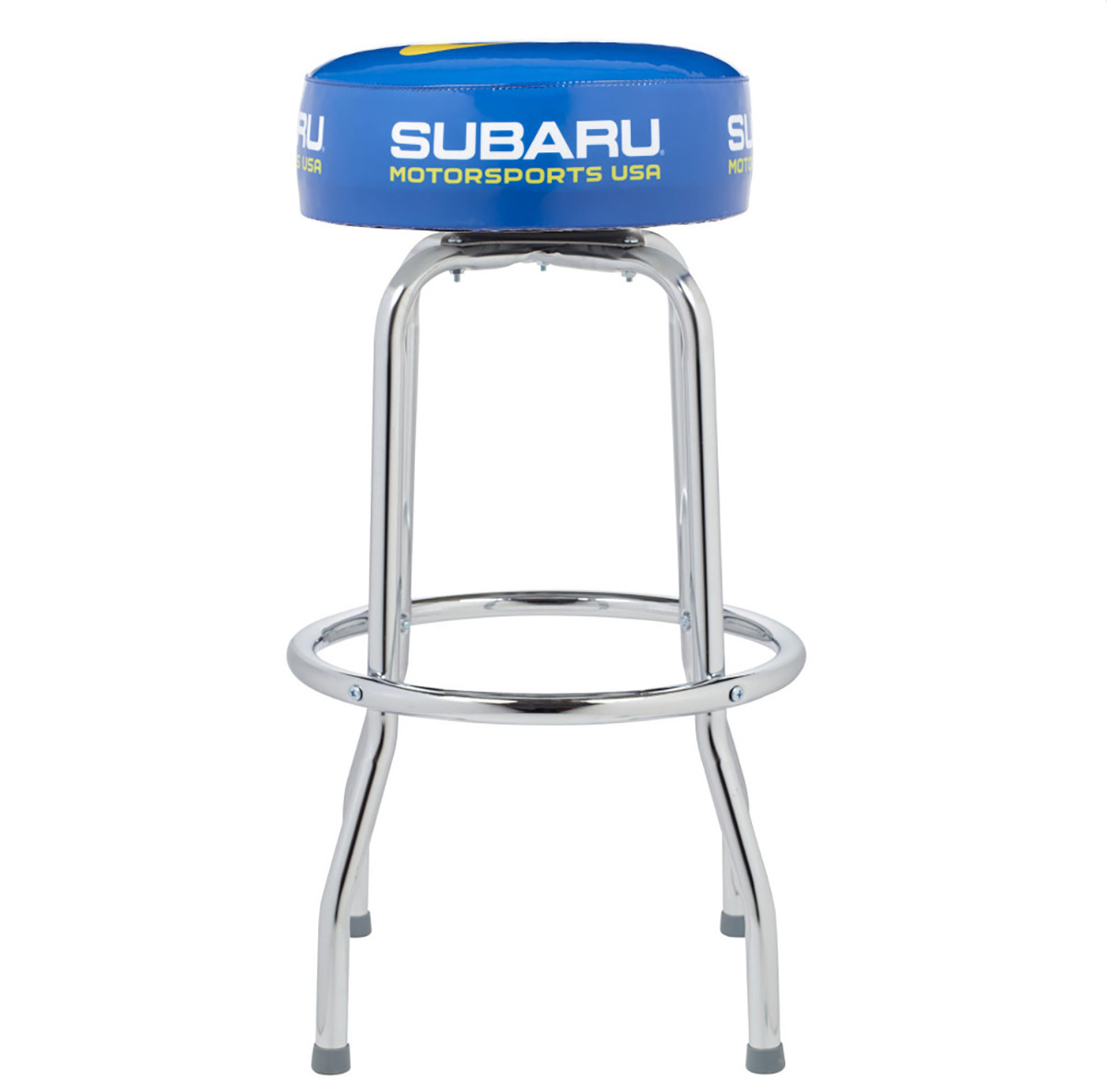
Belly up to the bar with the Subaru Motorsports Counter Stool ($175). The 30-inch-tall metal chair—with padded vinyl cover and automaker logo—is lightweight and swivels 360 degrees.
BMW Luxe Luggage

You won’t have trouble spotting this chic khaki-green BMW M Boardcase ($307) at airport baggage carousels. The high-performance “M” logo is etched on the durable polycarbonate casing, as well as on the main compartment zipper and all four of the sturdy double wheels. Comes with recycled lining, along with laundry and shoe bags.
Ford Yoga Gym Bag
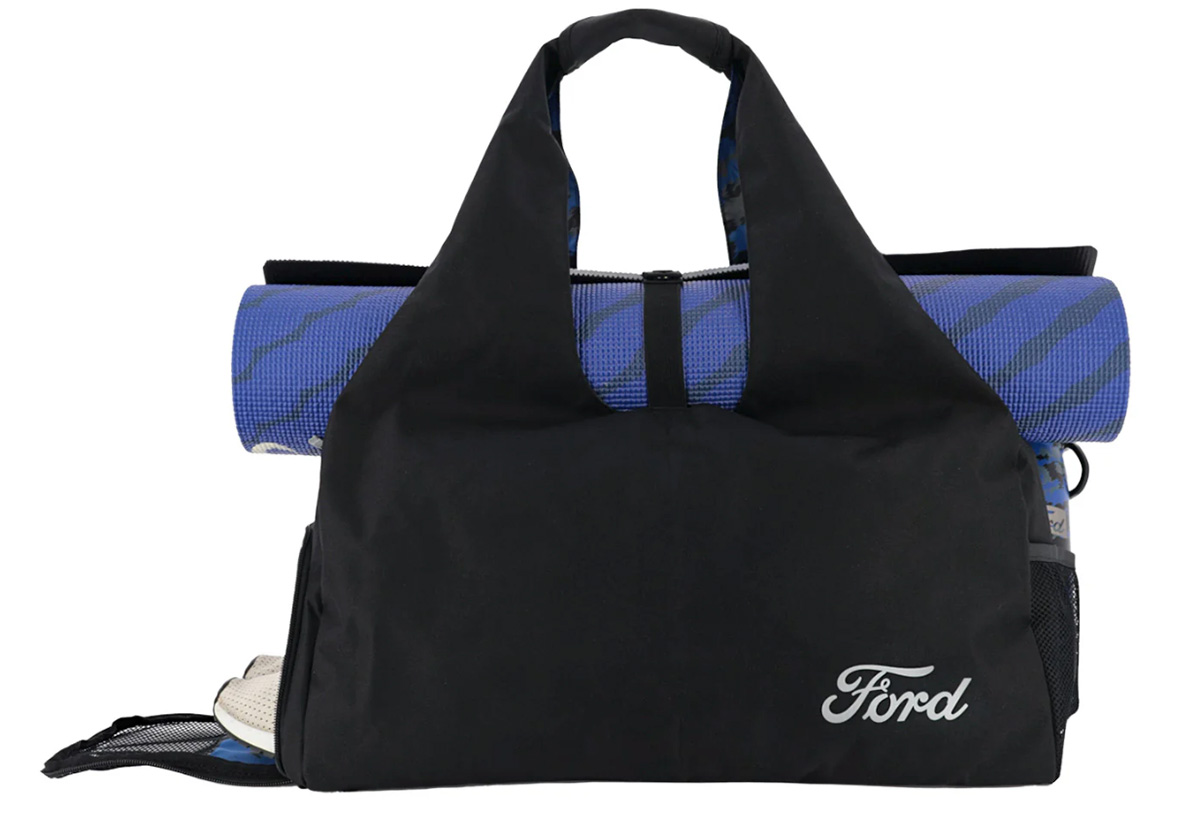
The Ford Yoga Gym Bag ($15) has a wide handle and button strap to securely carry a yoga mat, as well as convenient pockets to stow water bottles and shoes. Made of black polyester, with reflective silver Ford logo. (Yoga mat not included.)
Kia Mini Lamp with Speaker/Sound
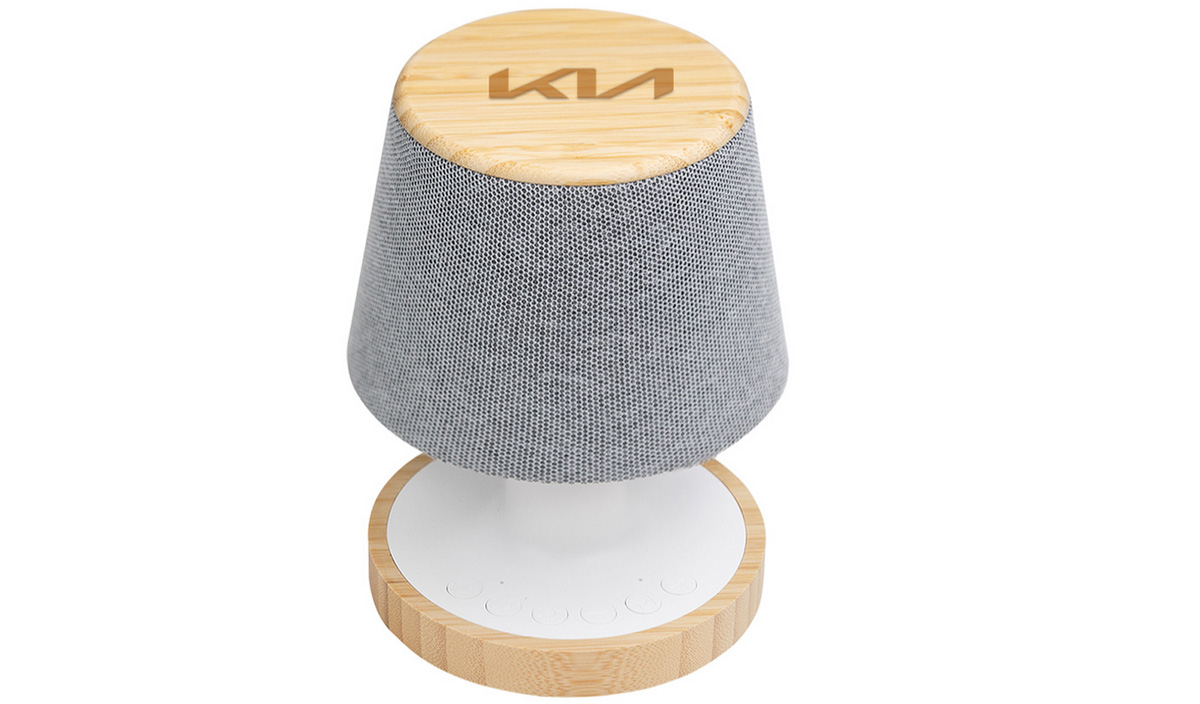
It doesn’t get much more Zen than a Kia Mini Lamp with Speaker and Sound Machine ($50). Made of bamboo, sturdy plastic and a fabric grill, the tiny wireless lamp has LED lighting with three settings. Pair with your phone to choose from eight soothing sounds: brook noise, bird chirp, forest bird, white bird, ocean wave, rainy day, wind and fireside.
Lexus Green Pro Set
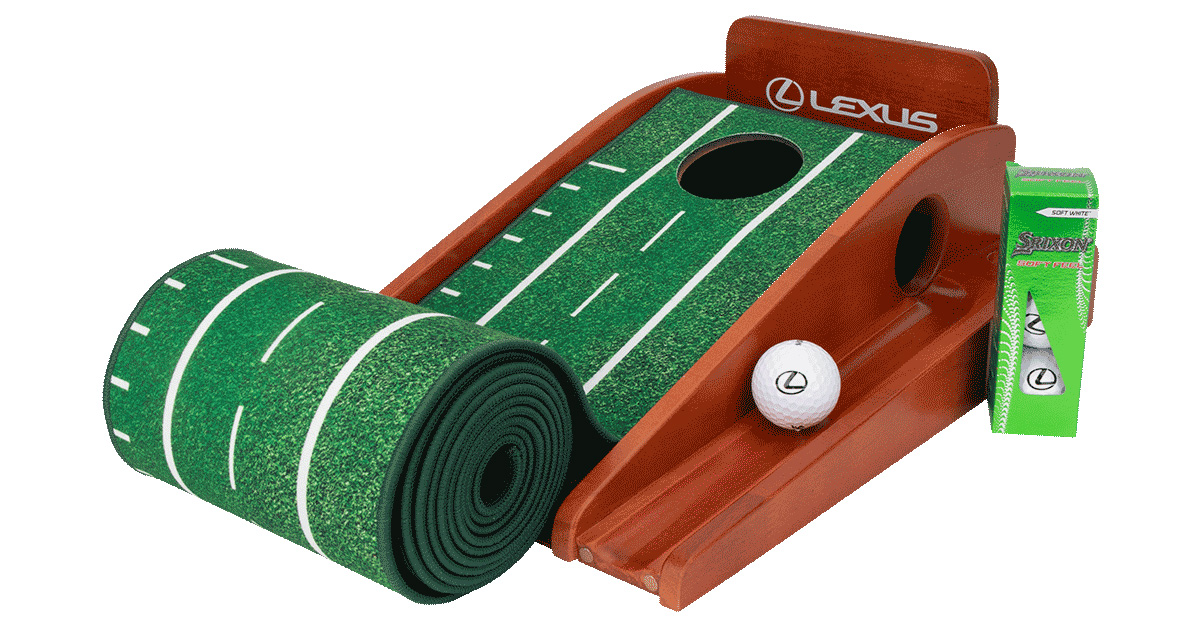
Practice makes perfect with the Lexus Green Pro Set ($257), a putting mat with “train-track markings” to help improve any golfer’s alignment. Lexus logo on the wood frame with automatic ball return.
Lamborghini Wireless Headphones

Turn on, tune in, drop out—well, at least at the end of a hectic day—with these Lamborghini Wireless MW75 Headphones by Master & Dynamic ($901). Batteries last up to 32 hours or up to 28 hours in active noise-canceling mode.
BMW Quatro Slim Travel Tumbler

The BMW Quatro Slim Travel Tumbler ($23) lives up to its name: sleek, smooth and scratch-resistant. Comes with leak-proof lid and non-spill design.
Ford Vintage Mustang Ceramic Mug

Giddy-up each morning with the Ford Vintage Mustang Ceramic Mug ($29). With cool blue stripes, the 14-ounce mug features a silver handle and iconic pony emblem.
My First Lamborghini by Clementoni
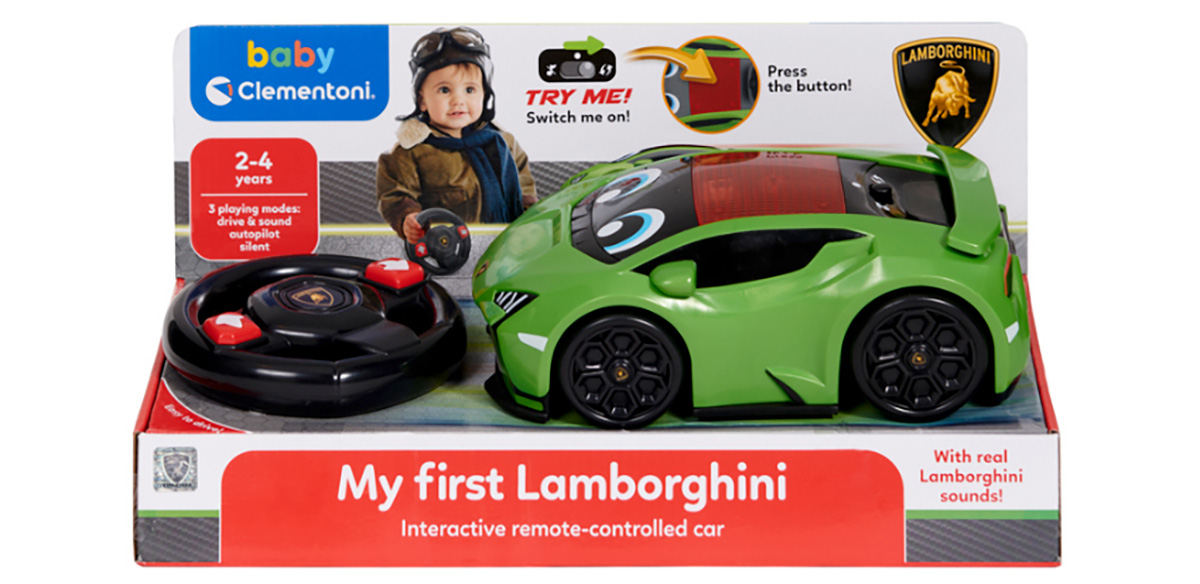
Proving it’s never too early to drive an exotic car, My First Lamborghini by Clementoni ($62) is for children ages two- to four-years old. Kids can activate the remote-control car by pressing the button on the roof or by using the remote. This Lambo certainly is less expensive than an entry-level Huracan, which starts at $250,000.
Rolls-Royce Cameo

For adults looking for their own pint-sized luxury ride, there’s the Rolls-Royce Cameo ($5,500). Touted as a piece of art rather than a toy, this miniature collectible is made from the same solid oak and polished aluminum used in a real Rolls. As with those cars, this one even has self-leveling wheel-center caps (which operate independently of the hubcaps so that the RR logo is always in the upright position).
Maserati Notebook

For those of us who still love the art of writing, the Maserati MC20 Sketch Note ($11) is an elegant notebook with 48 sheets of high-quality paper. The front and back covers feature stylish sketches of the interior of a Maserati MC20 supercar and the Maserati logo. Comes with saddle-stitched binding using black thread.
Dodge Demon Dog Collar
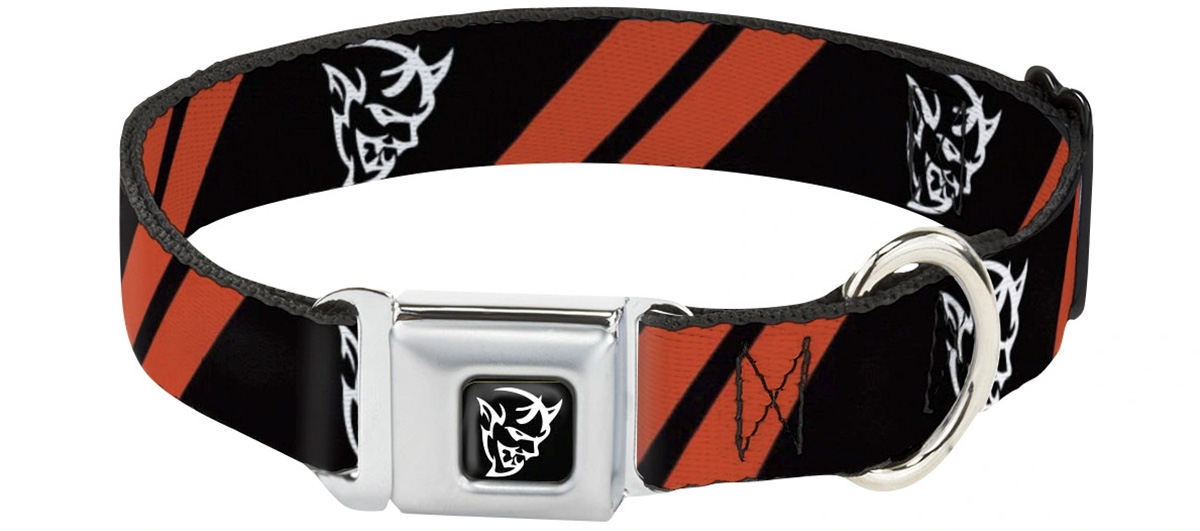
If your pooch is more Fluffy-kins and less the guard dog you sometimes need it to be, then there’s the Dodge Demon Seatbelt Buckle Dog Collar ($30). Made of steel and high-density polyester with a tiny seatbelt-buckle clasp, the collar is emblazoned with devilish Dodge Demon logos.
Real Estate
In real estate, it’s déjà vu all over again
1970s and ‘80s volatility led to creative financing options

In the 1970s and 1980s, mortgage interest rates climbed into the double digits and peaked above 18%. With rates like that, you needed more than a steady job and a down payment to buy a home — you needed creative financing ideas.
Today’s market challenges may look different, but the response has been surprisingly familiar: unusual financing methods are making a comeback, along with some new ones that didn’t exist decades ago. Here is a brief overview of the most popular tools from that era.
Assumable Mortgages were available with FHA, VA, and USDA loans and, until 1982, even Conventional mortgages. They allowed a buyer to take over the seller’s existing mortgage, including its interest rate, rather than getting a brand-new loan, while compensating the seller for the difference between the assumed loan balance and the contract price.
Often, a seller played a substantial role in a purchase. With Seller Financing (Owner Carry) the seller became the bank, letting the buyer make payments directly to them instead of to a traditional lender.
One variation on Seller Financing was the Land Contract. The seller was still the lender, but the buyer made loan payments to the seller, who then paid his own mortgage and pocketed the difference. The buyer would receive equitable title (the right to use and occupy the property), while the seller kept the title or deed until the contract was paid off or the property sold.
With Wraparound Mortgages, the seller created a new, larger loan for the buyer that “wrapped” around the existing mortgage at an agreed-upon rate. The buyer would then pay the seller, who would continue making mortgage payments on the existing balance, collecting payments and pocketing the spread. Whether title conveyed to the buyer or remained with the seller was negotiated between the parties.
Unlike an assumption, when buying a home Subject To an existing mortgage, the buyer took title to the property and agreed to pay the seller’s mortgage directly to the lender plus any equity to the seller; the mortgage stayed in the seller’s name. Now, most mortgages have a Due on Sale clause that prohibits this kind of transaction without the expressed consent of the lender.
Rent-to-Own was also a popular way to get into a home. While a potential buyer rented a property, the seller would offer an option to purchase for a set amount to be exercised at a later date (lease option) or allow a portion of the rent collected to be considered as a downpayment once accrued (lease purchase).
Graduated Payment Mortgage (GPM) loans were authorized by the banking industry in the mid-1970s and Adjustable Rate Mortgages (ARM) surfaced in the early 1980s. Both featured low initial payments that gradually increased over time.
With the GPM, although lower than market to start, the interest rate was fixed and payment increases were scheduled. A buyer could rely on the payment amount and save accordingly.
ARMs, on the other hand, had interest rates that could change based on the market index, with less predictability and a higher risk of rate shocks, as we saw during the Great Recession from 2007-2009.
While mortgage rates today aren’t anywhere near the extremes of the 1980s, buyers still face a tough environment: higher prices, limited inventory, and stricter lending standards. That combination has pushed people to explore tried and true alternatives and add new ones.
Assumable mortgages and ARMs are on the table again and seller financing is still worth exploring. Just last week, I overheard a colleague asking about a land contract.
Lenders are beginning to use Alternative Credit Evaluation indicators, like rental payment history or bank cash-flow analysis, to assess borrower strength when making mortgage loan decisions.
There are Shared Equity Programs, where companies or nonprofits contribute part of a down payment in exchange for a share of the home’s future appreciation. With Crowdfunding Platforms, investors pool money online to finance real estate purchases or developments.
Another unconventional idea being debated today is the 50-year mortgage, designed to help buyers manage high home prices. Such a mortgage would have a 50-year repayment term, rather than the standard 30 years, lowering monthly payments by stretching them over a longer period.
Supporters argue that a 50-year mortgage could make monthly payments significantly more affordable for first-time buyers who feel priced out of the market. Critics, however, warn that while the monthly payment may be lower, the lifetime interest cost would be much higher.
What ties the past and present together is necessity. As long as affordability remains strained, creative financing – old and new – will continue to shape the way real estate gets bought and sold. As with everything real estate, my question will always be, “What’s next?”
Valerie M. Blake is a licensed Associate Broker in D.C., Maryland, and Virginia with RLAH @properties. Call or text her at 202-246-8602, email her at [email protected] or follow her on Facebook at TheRealst8ofAffairs.
Real Estate
Could lower rates, lagging condo sales lure buyers to the table?
With pandemic behind us, many are making moves

Before the interest rates shot up around 2022, many buyers were making moves due to a sense of confinement, a sudden need to work from home, desire for space of their own, or just a general desire to shake up their lives. In large metro areas like NYC, DC, Boston, Chicago, Miami and other markets where rents could be above $2k-$3k, people did the math and started thinking, “I could take the $30,000 a year I spend in rent and put that in an investment somewhere.”
Then rates went up, people started staying put and decided to nest in the new home where they had just received a near 3% interest rate. For others, the higher rates and inflation meant that dollars were just stretching less than they used to.
Now – it’s been five years since the onset of the pandemic, people who bought four years ago may be feeling the “itch” to move again, and the rates have started dropping down closer to 5% from almost 7% a few years ago.
This could be a good opportunity for first time buyers to get into the market. Rents have not shown much of a downward trend. There may be some condo sellers who are ready to move up into a larger home, or they may be finding that the job they have had for the last several years has “squeezed all the juice out of the fruit” and want to start over in a new city.
Let’s review how renting a home and buying can be very different experiences:
- The monthly payment stays (mostly) the same. P.I.T.I. – Principal, Interest, Taxes and Insurance – those are the four main components of a home payment. The taxes and insurance can change, but not as much or as frequently as a rent payment. These also may depend on where you buy, and how simple or complex a condo building is.
- Condo fees help pay for the amenities in the building, put money in the building’s reserve funds account (an account used for savings for capital improvement projects, maintenance, and upkeep or additions to amenities)
- Condos have restrictions on rental types and usage – AirBnB and may not be an option, and there could be a wait list to rent. Most condo associations and lenders don’t like to see more than 50% of a building rented out to non-owner occupants. Why? Owners tend to take better care of their own building.
- A homeowner needs to keep a short list of available plumbers, electricians, maintenance people, HVAC service providers, painters, etc.
- Condo owners usually attend their condo association meetings or at least read the notices or minutes to keep abreast of planned maintenance in the building, usage of facilities, and rules and regulations.
Moving from renting to homeownership can be well worth the investment of time and energy. After living in a home for five years, a condo owner might decide to sell, and find that when they close out the contract and turn the keys over to the new owner, they have participated in a “forced savings plan” and frequently receive tens of thousands of dollars for their investment that might have otherwise gone into the hands of a landlord.
In addition, condo sellers may offer buyers incentives to purchase their home, if a condo has been sitting on the market for some time. A seller could offer such items as:
- A pre-paid home warranty on the major appliances or systems of the house for the first year or two – that way if something breaks, it might be covered under the warranty.
- Closing cost incentives – some sellers will help a cash strapped buyer with their closing costs. One fun “trick” realtors suggest can be offering above the sales price of the condo, with a credit BACK to the buyer toward their closing costs. *there are caveats to this plan
- Flexible closing dates – some buyers need to wait until a lease is finished.
- A seller may have already had the home “pre-inspected” and leave a copy of the report for the buyer to see, to give them peace of mind that a 3rd party has already looked at the major appliances and systems in the house.
If the idea of perpetual renting is getting old, ask a Realtor or a lender what they can do to help you get into investing your money today. There are lots of ways to invest, but one popular way to do so is to put it where your rent check would normally go. And like any kind of seedling, that investment will grow over time.
Joseph Hudson is a referral agent with Metro Referrals. He can be reached at 703-587-0597 or [email protected].




















